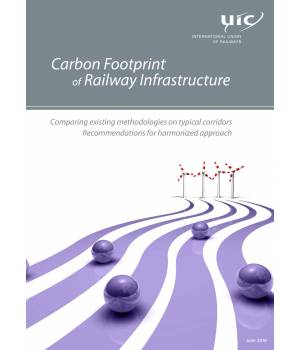
Carbon Footprint of Railway Infrastructure
One of the weakest and least harmonized approaches is the evaluation and estimation of the carbon content of the railway infrastructure over its life cycle. There have been some reports and study cases to estimate the carbon content of the railway sector’s infrastructure, but the boundaries and the output results are not always consistent and often do not include the same parameters.
The tasks of this report commissioned by UIC are threefold:
- To gather the existing carbon footprint calculation approaches for rail infrastructure and to compare them in a qualitative, consistent and harmonized way, describing the parameters and indicators included.
- To apply a selection of methodologies identified for typical corridors, in order to assess the differences between the distinct approaches, and how they fare compared with each other, for different types of rail networks and operating conditions.
- To provide recommendations and potential best ways forward to develop a common approach for a carbon footprint methodology for railway infrastructure.
Building on this work, UIC could be in a position to offer their members common guidelines on carbon footprint determination for railway infrastructure. Such an agreed approach could be adopted by UIC members in order to provide incentives for green procurement and comparability for trip carbon content calculators.
| Author | UIC - Sustainable Development Department |
| ISBN | 978-2-7461-2500-1 |
| Pages | 54 |
Data sheet
- Language
- English
- Format
- Downloadable
- Edition
- Ed. no.1
- Edition date
- 13/07/2016
- Publication date
- 18/08/2016
- Page number
- 54
- Theme
- Sustainable development Développement durable
- sku
- 5-16009E/PDF
- Reference
- 5-16009
 Cookie preferences
Cookie preferences

